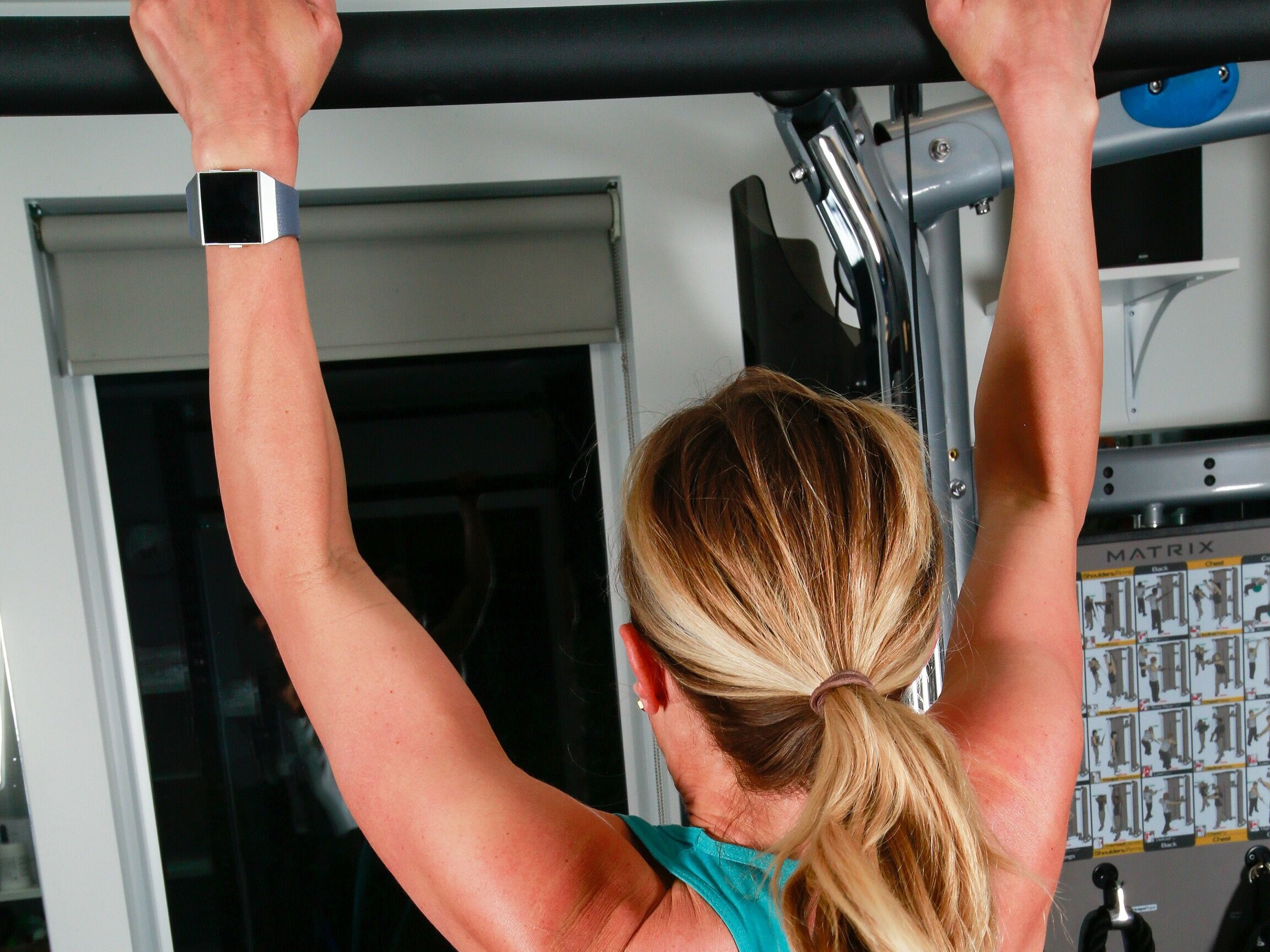CrossFit is well known for utilizing momentum driven variations of gymnastics movements in workouts commonly referred to as “kipping”. Kipping pull-ups and kipping ring muscle-ups are two skills that many new (and many experienced) CrossFit athletes desire to perform so they can complete the WOD at their local box. Often athletes are told they need to be able to perform a certain amount of repetitions of a strict gymnastics movement before they can learn the kipping version, but what about the athletes that walk into the gym with the requisite strength to perform the desired strict repetitions on day 1? Should this individual move to kipping immediately because they are at lower injury risk due to having a more substantial training background or base level of strength? Should the individual that is unable to perform a strict pull-up never practice a kipping swing on the pull-up bar? Kipping variations of gymnastics skills such as the pull-up and muscle-up are often erroneously blamed for being a primary cause of this injury to the shoulder in CrossFit. It is not the movement that is at fault, it is the tolerance of the tissue being stressed by the movement and the technique of individual performing the skill that are the problems.
Tissue remodeling timelines are commonly discussed related to recovery from injury where the injured tissue undergoes three overlapping phases described as inflammation, proliferation, and remodeling. This remodeling phase typically begins around 21 days post-injury and can last multiple years depending on the type of tissue involved and the manner in which it is stressed during healing. Training can be viewed as a series of minor injuries intentionally inflicted upon oneself to stimulate the body to develop increased capacity to perform the activity that caused the injury. If this is considered from the perspective of the three phases of healing, we exercise to stimulate tissue remodeling without needing to undergo major injury.
In our experience at our Boulder Physical Therapy practice, the problem often encountered by individuals that have baseline strength capacity but lack experience with the ballistic nature of kipping gymnastics is that the connective tissues such as tendons, ligaments, and cartilage have not adapted to the type of forces the muscles are able to generate during these skills. The novel nature of these skills is commonly accompanied by poor skill during initial performance resulting in even greater stress being placed on these connective tissues at various points of the movement.
The comparative lack of blood supply to these connective tissues compared to muscle and bone results in a relative increase in the length of the remodeling phase. The time required for these tissues to adapt is often 2-3x longer than expected when recovering from injury to muscle or bone. Connective tissues require much longer periods of stress and recovery to develop the capacity required to sustain the repetitive forces experienced during kipping pull-ups and muscle-ups. This means that athletes should not wait to start developing a skill and strict strength should not be the criteria we use to determine readiness. Tissue remodeling timelines should guide introduction of appropriate loading progression for performing kipping gymnastics variations. Boulder physical therapy patients are encouraged to respect the timelines required to develop the resiliency required to perform these skills and remain pain-free at optimal function across the lifespan. Progressive introduction of kip swings on the bar and rings to all athletes regardless of strength and experience will keep everyone in the gym participating to the best of their ability.
Click Here to schedule your next appointment with the experts at MEND

